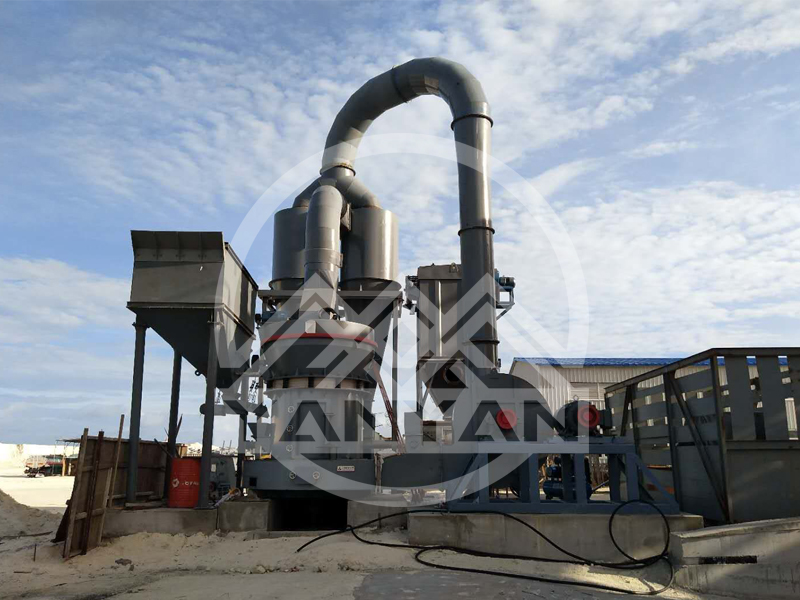High Pressure Grinder Mill: Revolutionizing Industrial Grinding Processes
In the ever-evolving landscape of industrial grinding, the high pressure grinder mill has emerged as a game-changer. This advanced technology is transforming how materials are processed, offering unprecedented efficiency and cost savings. Let's delve into the world of high pressure grinder mills, exploring their mechanisms, benefits, and applications.
Understanding the Technology Behind High Pressure Grinder Mills
At its core, a high pressure grinder mill operates by applying immense pressure between two rollers. These rollers, typically made of high-quality steel, compress the feed material, causing it to fracture and break down into smaller particles. The process is highly energy-efficient compared to traditional grinding methods, as it leverages the principle of interparticle stress to achieve size reduction with minimal energy consumption.
The design of these mills allows for precise control over the grinding process. Factors such as roller pressure, rotational speed, and feed rate can be adjusted to optimize performance for different materials. This adaptability makes high pressure grinder mills suitable for a wide range of applications, from mining and cement production to recycling and chemical processing.

Key Advantages of High Pressure Grinder Mills
Energy Efficiency
One of the most significant benefits of high pressure grinder mills is their exceptional energy efficiency. Studies have shown that these mills can reduce energy consumption by up to 30% compared to conventional grinding technologies. This efficiency translates to substantial cost savings for industrial operations, making them a financially sound investment in the long run.
Enhanced Product Quality
The grinding process in high pressure mills produces particles with a more uniform size distribution. This consistency is crucial in applications where product quality is paramount, such as in the production of cement or pharmaceuticals. The reduced particle size variation also improves the performance of downstream processes, leading to overall operational efficiency.
Lower Maintenance Costs
Designed for durability and reliability, high pressure grinder mills require less frequent maintenance than traditional grinding equipment. The robust construction of the rollers and the optimized stress distribution during operation minimize wear and tear. This translates to reduced downtime and lower maintenance expenses, further enhancing the economic viability of these mills.
Applications Across Industries
Mining and Mineral Processing
In the mining sector, high pressure grinder mills are increasingly being used for the comminution of ores. They excel in reducing the particle size of hard rock minerals, making them more amenable to subsequent processing steps like flotation and leaching. The energy savings and improved grinding efficiency are particularly valuable in this energy-intensive industry.
Cement Manufacturing
Cement production is another major application area for high pressure grinder mills. These mills are capable of grinding clinker and other raw materials to the precise particle sizes required for high-quality cement. The uniform particle size distribution enhances the cement's performance characteristics, such as strength and setting time.
Recycling and Waste Management
With the growing emphasis on sustainability, high pressure grinder mills are finding applications in recycling processes. They can efficiently grind various types of waste materials, including plastics, metals, and construction debris, facilitating their reuse and reducing landfill waste.
Maintenance and Operational Considerations
While high pressure grinder mills offer numerous advantages, proper maintenance is essential to ensure their optimal performance. Regular inspection of the rollers, lubrication systems, and drive mechanisms is crucial. Operators should also monitor the feed material characteristics, as variations in hardness or moisture content can affect grinding efficiency.
Training for personnel is another important consideration. Understanding the principles of operation, troubleshooting common issues, and performing routine maintenance tasks can significantly extend the lifespan of these mills and maximize their return on investment.
The Future of High Pressure Grinder Mills
As technology continues to advance, high pressure grinder mills are poised to become even more efficient and versatile. Research is ongoing to develop new materials for the rollers that can withstand higher pressures and abrasive feed materials. Additionally, integration with automation and smart control systems will further enhance their performance, allowing for real-time adjustments based on feed material properties and process requirements.
In conclusion, high pressure grinder mills represent a significant advancement in industrial grinding technology. Their combination of energy efficiency, product quality enhancement, and cost-effectiveness makes them an invaluable asset across various industries. As these mills continue to evolve, they will undoubtedly play a pivotal role in shaping the future of material processing.